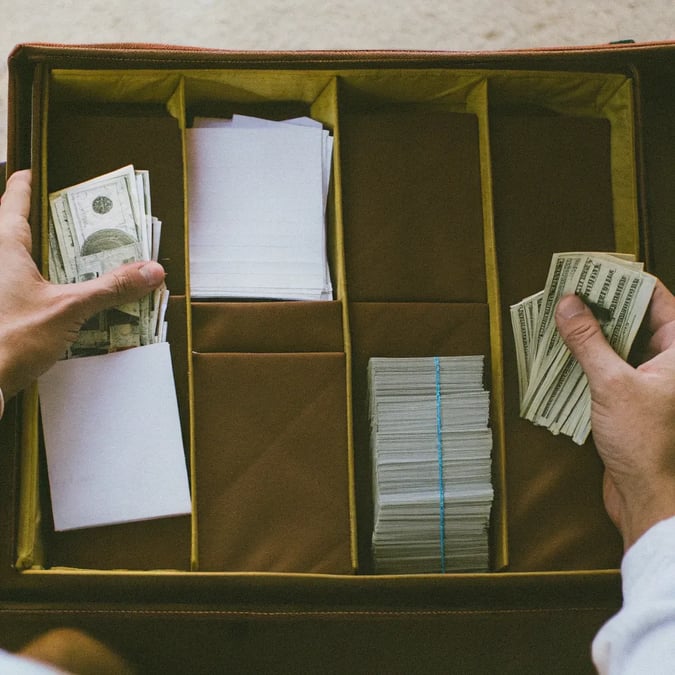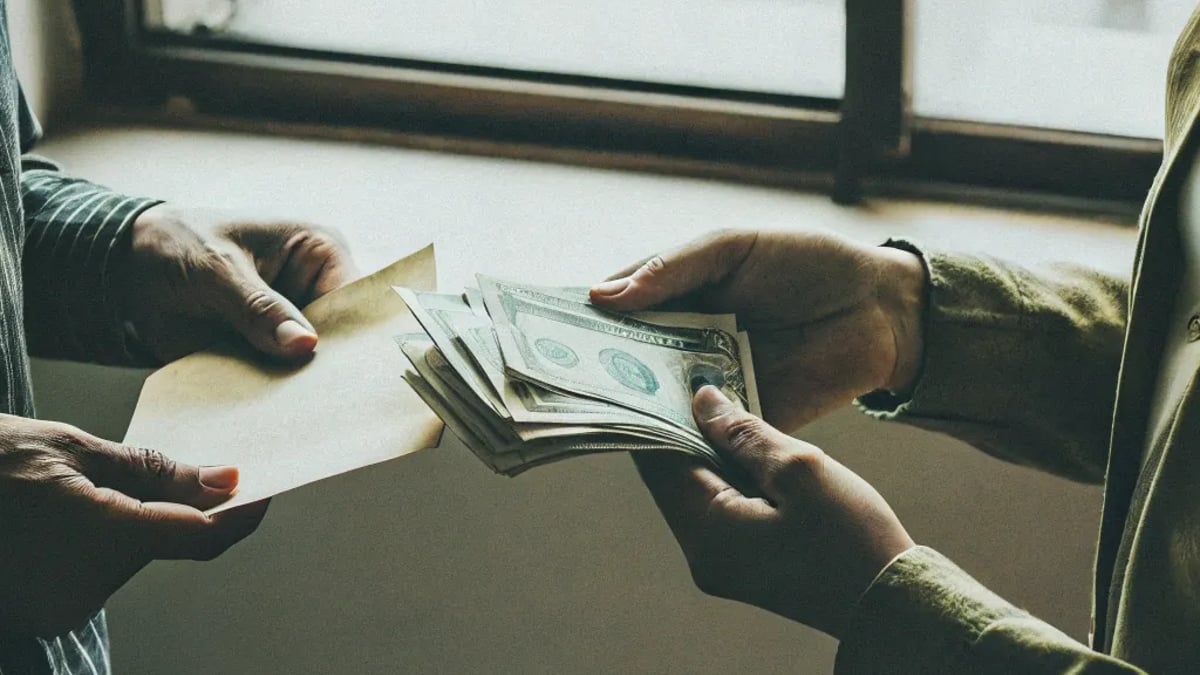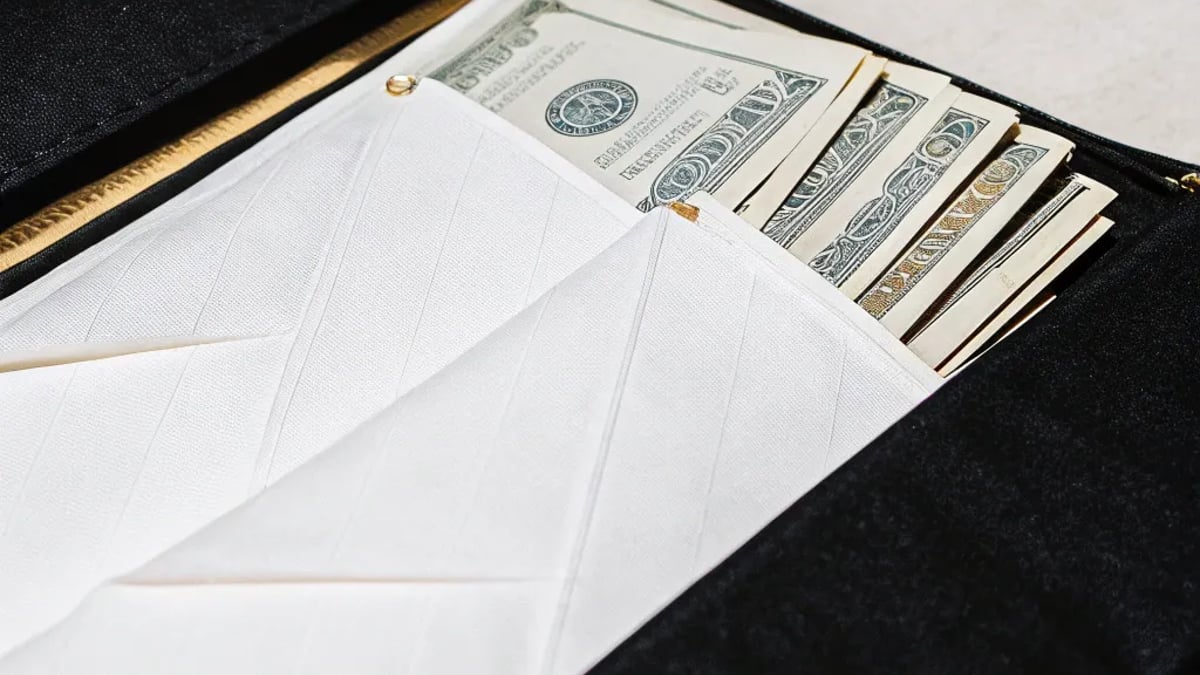
Cash stuffing has exploded in popularity, particularly on social media platforms like TikTok. This budgeting method, which involves physically dividing cash into envelopes for different expense categories, has gained traction as people seek more tangible ways to manage their finances. But beneath the aesthetic videos of neatly organized cash lies a budgeting approach with both significant benefits and potential drawbacks. Let's explore whether this old-school technique might be the financial solution you've been looking for.
What Exactly Is Cash Stuffing?
Cash stuffing (also known as the cash envelope system) is a budgeting method where you withdraw cash and physically separate it into different envelopes or containers based on spending categories. Each envelope represents a specific expense like groceries, entertainment, or transportation. Once an envelope is empty, you're done spending in that category until the next budgeting period.
The concept isn't new—it's essentially a rebranding of the envelope budgeting system that financial experts like Dave Ramsey have promoted for decades. What's different now is its presentation and popularity, particularly among younger generations discovering it through social media.
"Cash stuffing is simply the envelope system with a TikTok rebrand," says Tori Dunlap, founder of Her First $100K, a financial education platform. "It's gained popularity because it makes budgeting tangible in an increasingly digital world."

How Cash Stuffing Works
The process is straightforward:
- Determine your budget categories (rent, utilities, groceries, entertainment, etc.)
- Calculate how much to allocate to each category after paying fixed expenses
- Withdraw that amount in cash from your bank account
- Sort the physical cash into labeled envelopes or a cash-stuffing binder
- Only spend what's in each envelope for its designated purpose
When you need to buy groceries, you take money exclusively from your grocery envelope. Once that cash is gone, you're done spending in that category until your next payday or budgeting period.
Why Cash Stuffing Has Gained Popularity
The recent surge in cash stuffing's popularity isn't accidental. Several factors have contributed to its rise:

Visual Accountability
In our increasingly digital world, cash stuffing provides a tangible, visual representation of your money. Seeing your cash physically diminish as you spend creates an immediate feedback loop that digital transactions often lack.
"There's something psychologically powerful about physically handling your money," explains Dr. Brad Klontz, financial psychologist and associate professor at Creighton University. "It activates different parts of the brain than digital transactions do, creating more awareness around spending."
Debt Avoidance
With credit card debt reaching record highs—the average American carried $6,501 in credit card debt in 2023, according to Experian—many people are seeking ways to avoid overspending. Cash stuffing makes overspending nearly impossible, as you can only use what you have in each envelope.
Social Media Influence
The aesthetic appeal of organizing cash into colorful envelopes or specialized binders makes for compelling social media content. TikTok videos tagged with #cashstuffing have accumulated billions of views, with influencers showcasing their elaborate systems and claiming significant financial improvements.
Response to Economic Uncertainty
Following periods of economic instability, including the COVID-19 pandemic and subsequent inflation, many people have sought greater control over their finances. Cash stuffing provides a sense of security and control that resonates during uncertain times.
The Benefits of Cash Stuffing
1. Creates Spending Awareness
Using cash forces you to be conscious of every dollar you spend. Research from the MIT Sloan School of Management found that people spend up to 100% more when using credit cards versus cash. There's a psychological "pain of paying" that's more pronounced with physical currency.
When Shannon Martinez, a 32-year-old teacher from Austin, started cash stuffing, she noticed an immediate change: "I was shocked at how quickly I'd been blowing through money on little things. When I had to physically hand over cash for my daily coffee, I started questioning whether it was worth it."
2. Enforces Hard Spending Limits
Once an envelope is empty, that's it—you can't spend more in that category without deliberately taking money from another envelope. This creates natural boundaries that digital budgeting methods might not.
3. Eliminates Overspending and Interest Charges
Cash stuffing can help eliminate credit card debt by preventing you from spending money you don't have. With Americans paying an average APR of over 20% on credit cards, avoiding interest charges can save substantial amounts.
4. Simplifies Budgeting
For those overwhelmed by complex budgeting apps or spreadsheets, cash stuffing offers a straightforward alternative that doesn't require technical knowledge or constant digital tracking.
5. Provides Immediate Feedback
You can see exactly how much money remains in each category at any time, making it easier to adjust spending habits in real-time rather than discovering overspending at the end of the month.
Potential Drawbacks to Consider
Despite its benefits, cash stuffing isn't without significant limitations:
1. Safety Concerns
Keeping substantial amounts of cash at home creates security risks. If your cash is stolen or destroyed (in a fire or flood, for example), it's typically not recoverable, unlike money in FDIC-insured bank accounts.
James Cooper, a certified financial planner at Greenwood Financial Advisors, warns: "I've had clients lose thousands in home break-ins. No budgeting system is worth that risk. Consider keeping only a week's worth of cash at home if you want to try this method."
2. Missing Out on Digital Benefits
Cash stuffing means foregoing many advantages of digital banking:
- No purchase protection that credit cards offer
- No rewards or cashback on purchases
- No automatic tracking of spending for financial analysis
- No interest earned on money sitting in envelopes
3. Inconvenience Factor
In our increasingly cashless society, using only physical currency can be cumbersome:
- Regular ATM visits are necessary
- Online purchases become complicated
- Bill payments may require money orders or checks
- Carrying cash for large purchases can be risky
4. Limited Scalability
The cash envelope system works well for discretionary spending but becomes unwieldy for larger financial goals:

Note: This chart illustrates how cash stuffing becomes less practical as financial goals increase in size and complexity.
Is Cash Stuffing Right for You?
Whether cash stuffing will work for your situation depends on several factors:
You Might Benefit from Cash Stuffing If:
- You struggle with digital overspending or credit card debt
- You prefer tangible, visual methods of tracking money
- You want a simple budgeting system without apps or technology
- You're working to break impulsive spending habits
- You're comfortable handling and storing cash securely
Melissa Johnson, a financial coach from Denver, suggests: "Cash stuffing is particularly effective for people who've tried digital budgeting and failed. The physical aspect creates accountability that digital methods can't match for some personality types."
Cash Stuffing Might Not Work If:
- You make most purchases online
- You're concerned about safety or theft
- You value credit card rewards or cashback
- You prefer automated bill payments and tracking
- You're saving for major goals requiring significant funds
How Can You Start Cash Stuffing?
If you're interested in trying cash stuffing, here's a simplified approach to get started:
1. Create a Basic Budget
Before withdrawing cash, determine how much you need for each category. Start by listing your income and fixed expenses (rent/mortgage, utilities, loan payments). The remaining amount is what you'll distribute across your cash envelopes.
2. Choose Your Categories
Begin with essential variable expenses:
- Groceries
- Gas/transportation
- Entertainment
- Personal care
- Dining out
- Miscellaneous
You can add more specific categories as you become comfortable with the system.
3. Set Up Your System
You'll need:
- Envelopes or a cash organizing system (specialized cash stuffing binders are available online)
- Labels for each category
- A secure place to store your cash at home
4. Start Small
You don't need to convert your entire budget to cash immediately. Many successful cash stuffers recommend starting with just a few problematic spending categories.
"I only use cash for groceries and entertainment," says Tyler Williams, who started cash stuffing last year. "Those were my problem areas. I still use cards for everything else, which gives me the best of both worlds."
A Hybrid Approach: Modern Cash Stuffing
For those concerned about the drawbacks of traditional cash stuffing, a hybrid approach might offer the best solution:
Digital Envelopes
Many banking apps now offer "envelope" or "bucket" features that let you separate your money digitally while keeping it in your bank account. Apps like Qapital, Simple, and even some credit unions offer these features.
The Cash-Digital Balance
Consider using cash only for categories where you tend to overspend, while keeping the convenience of cards and automatic payments for fixed expenses and online purchases.
Financial advisor Rebecca Montoya recommends: "Use cash for discretionary spending like entertainment, dining out, and personal shopping—areas where impulse purchases happen. Keep using digital methods for fixed bills and necessities."
What Do Financial Experts Think About Cash Stuffing?
Financial experts have mixed opinions on cash stuffing, but most acknowledge its psychological benefits while pointing out practical limitations.
According to a 2023 survey by the Financial Planning Association, 67% of certified financial planners believe cash-based budgeting systems can be effective for clients struggling with overspending, but only 12% recommend it as a long-term strategy.
Dave Ramsey, perhaps the most well-known proponent of the envelope system, maintains that "the envelope system works because it's simple and it's emotional." However, even Ramsey suggests transitioning to more sophisticated methods as your financial situation improves.
Common Questions About Cash Stuffing
Is cash stuffing safe?
The safety concern is significant. Keep only what you need for the short term in cash, store it securely (consider a fireproof safe), and ensure your home insurance covers cash losses (many policies limit cash coverage to $200-$500).
How do I handle bills and online purchases with cash stuffing?
Most cash stuffers maintain a checking account for bills, online purchases, and automatic payments. They only withdraw cash for variable expenses where overspending is a concern.
Won't I miss out on credit card rewards?
Yes, you'll forgo rewards when using cash. However, for many people, the savings from reduced impulse spending far outweigh potential rewards. Consider whether you're actually coming out ahead with credit card rewards if you're carrying a balance or overspending.
How do I track my spending with cash?
Some cash stuffers keep receipts in each envelope or note expenditures on the envelope itself. Others use a spending journal or take photos of receipts to maintain records.
The Bottom Line: Balance Is Key
Cash stuffing isn't an all-or-nothing proposition. The most successful practitioners often adopt a balanced approach, using cash for problem spending areas while maintaining the conveniences of digital banking for other aspects of their financial lives.
"The best budgeting system is the one you'll actually use," says financial educator Tiffany Aliche, founder of The Budgetnista. "If cash stuffing helps you gain control over your spending, it's valuable—even if you only use it for certain categories or as a temporary measure."
Whether cash stuffing becomes your primary budgeting method or just one tool in your financial toolkit, the key is finding a system that helps you spend mindfully and achieve your financial goals.
Disclaimer: This article is for informational purposes only and does not constitute financial advice. Financial strategies should be tailored to your individual situation. Consider consulting with a financial professional before making significant changes to your financial approach.
Tags

About Elliot W. Ramsey the Author
Elliot W. Ramsey is a financial-literacy expert with over 15 years of experience empowering individuals to cultivate healthy financial habits and manage personal budgets. He is renowned for his ability to simplify complex financial concepts, making them accessible to audiences of all ages.
Recommended Articles
AI tool to research Home loans
Discover how AI tools are revolutionizing home loans, making it easier for buyers to find tailored mortgage options effortlessly.
Top Walking Routines for Seniors With AFib
Discover effective walking routines for seniors with AFib to improve health and wellbeing through gentle exercises tailored to individual fitness levels.
Returned Amazon Items: What Buyers Should Know
Navigate the complexities of returned items on Amazon. Learn about conditions, policies, and tips for savvy bargain shopping.
How to Find Walmart Recliner Chair Clearance Deals
Discover top tips for finding Walmart recliner chair clearance deals, maximizing savings while enjoying comfort and style in your home.
What Most People Get Wrong About Treating Dry Eyes
Explore common misconceptions about treating dry eyes. Get a comprehensive guide on effective strategies and debunk prevalent myths.




